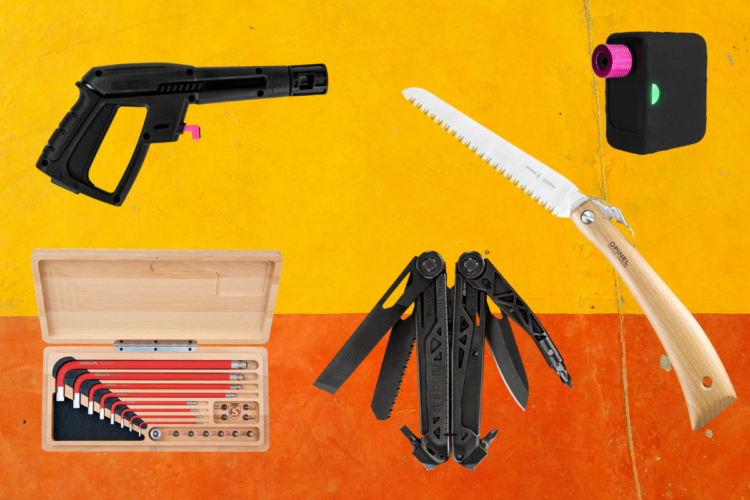Well folks here I am, back at it again. I’ve been spending some time lately checking out what Manitou has to offer in the all mountain/ XC categories of forks. The biggest thing I have to say about the Manitou Minute Elite TPC (MSRP $650.00), is WOW – what an awesome fork right out of the box! No mods are necessary for this one, just a few pumps on the high pressure shock pump to get the correct sag and this fork was hauling up slopes, ripping the trail apart, and soaking up 6 foot drops like they were curb hops.
To help me evaluate the performance of MTB products, I’ve found it best to change just one part at any given time and to use the same test course for consistency. Once again, the course that I chose for my test of the Manitou Elite TPC was Kelso Conservation Area. The course offers singletrack, rock gardens, high G turns, and drops up to 10′. Kelso is also a stop on the DH circuit here in Canada which makes it the perfect setting to thrash this fork.
Installation
First up, I removed my old fork unit, making sure to remove the bottom crown race from the old damper with care. I then measured the steering tube twice to get the correct length and then marked the Minute with a fine felt marker. After measuring a third time I finally cut the steering tube to the correct length using a very sharp pipe cutter. You could go out and purchase a specialized tool such as the SG-6 from Park or you could use a hack saw with a fresh blade in a pinch. Either way is correct, just be sure to finish the job by removing any burrs. Also, don’t forget to install a fresh star nut (use a nut setter such as the TNS-1) and finally place the fork on the bike (look for a more detailed post on the procedure coming soon). The whole process took me about 35 minutes and after installing the 20mm axle and brake I was good to go.
Setup
A quick ride revealed that I needed to add a bit more pressure in the fork (too much sag). For those who don’t know, sag is the fork compression you get when sitting still on the bike, hands on bars. I set the compression to mid-way from full left and set the rebound to mid-way as well – with the Manitou Minute the ideal sag is about 25%. Whenever setting the sag on the fork it’s a good idea to have the gear and water you will ride with on you, otherwise you will be off. On my first ride I also had to change the compression and rebound settings to compensate for the slight bobbing I got on extended climbs. This particular model is not equipped with a lock out.
Compression
Riding around finding drops and doubles can be exhausting but luckily Kelso makes it all accessible. Right away I found the Minute features plush, smooth control of the fork through it’s entire travel with a bit of ramping (increase in air spring rate) and the end of its stroke. What you get is a fork that is predicable when going off drops and controllable without coming to a dead stop when you touch down. Hitting rock gardens was equally as fun – the fork went through them with no issues, taking each bump equally well.
If you remain seated in your saddle when climbing the levels set with the control knobs will more than compensate for the pedaling forces you generate and will keep you from losing energy. Now with a fork like this, there will be some movement when pedaling but certainly not enough to annoy you. Using the compression knob you can dial out most of the slow shaft speeds that are associated with this, just don’t dial out too much. The great thing about the Minute is its ability to maintain ground control when climbing and braking. Once you dial in the right settings you’ll want the fork to set about a half inch while under braking but no more than that. One reason this fork offers such great control is that it produces very little static friction.
Rebound
The rebound circuit on the Minute will control the behavior of the fork when it is returning back to its ride height. Use the control located on the bottom of the fork to control how quickly the fork returns after compression. You know when you’ve got this right when the fork comes back controlled, without wanting to toss you off the bike. Luckily the rebound circuit on this fork works very well once set. Going through rough terrain and watching the fork follow the trail smoothly without beating on my wrists was a definite indicator to me that the rebound and compression circuits are working well.
Overall Impressions
The Manitou Minute Elite is one of those forks that, once you spend the time setting it up correctly, you’d be hard pressed to find another fork that performs as well in the same category. I was very impressed with the fork’s performance, particularly its ability to take both large hits (up to 6 foot drops) and rock gardens. I don’t think I’ve ever ridden a fork that inspired as much confidence as this one has, especially in the 140mm class. The fork always felt smooth, tracked extremely well, and kept me in control. Under braking and climbing the fork maintained wheel contact and never felt like it was blowing through its travel.
The only thing I *might* change on the Minute Elite TPC is the hex bolt through axle configuration. Even though it is very stiff and strong with no chance of damaging the fork, a tool free version would be a welcome addition.
Manitou Specifications:
| Damping: | TPC |
| Adjustments: | Compression, rebound, preload |
| Spring: | MARS Air |
| Stanchions: | 32mm, Aluminum |
| Casting: | One piece Reverse Arch Magnesium |
| Steerer: | Aluminum 1 1/8″ |
| Crown: | Hollow Crown |
| Wheel Size: | 26″ |
For those of you who like a more objective rating system, here’s how I rate the Manitou Minute Elite TPC on a 10-point scale:
- Tracking and steering 9
- Rebound control 8
- Compression control 8
- Construction and quality 8
- Trail worthy (1 for light XC, 10 for extreme FR/DH) 7
- Overall performance & quality 8.5
I also received a press release on Manitou’s latest damper unit that will be available on the 2010 year models and can be added to existing 2007 R7, Minute, and Drake forks. The unit is called the Absolute + and it allows you to more finely tune your fork. The Low and High speed compression circuits can be tuned independently from one another plus the unit includes a lockout feature. Manitou will also be releasing a lockout lever called the MILO which will be available in a right hand version only.
So stay tuned – who says you can’t make a great fork even better?
Just a quick thanks to the folks at Manitou for the chance to review their product. Oh yeah – and be sure to check out the new Manitou website – it’s updated with all the new forks as well as a wealth of information for all their stuff.























5 Comments
Jun 17, 2009
Jun 18, 2009
Jun 17, 2009
Jun 18, 2009
Jun 17, 2009